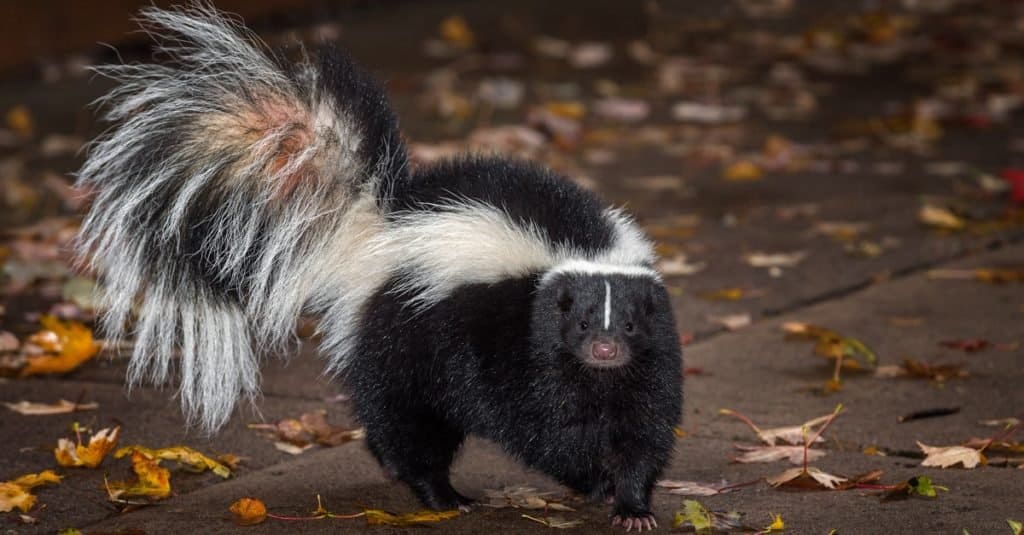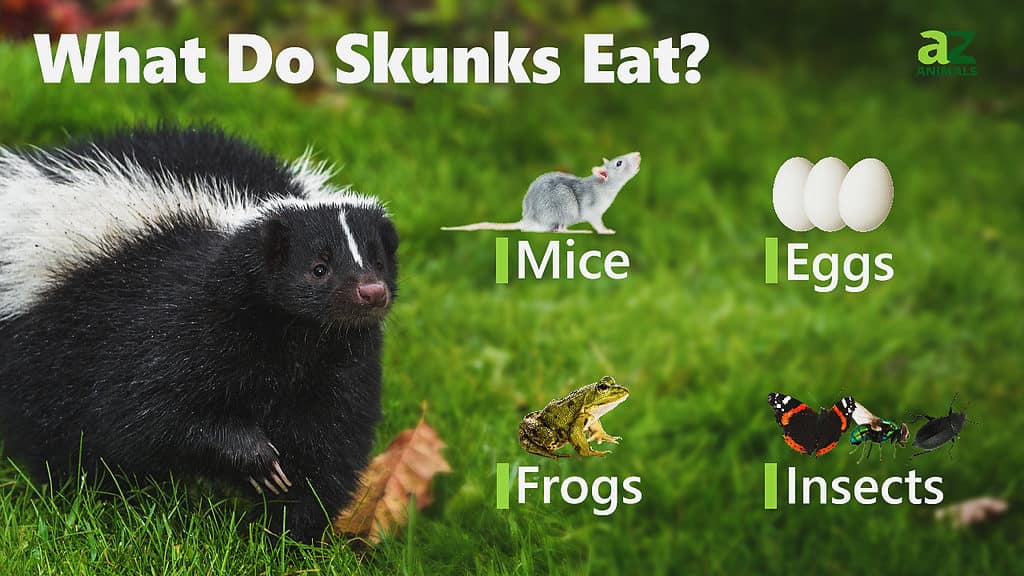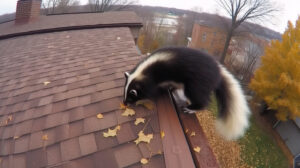A skunk in Old Town, ME, got its head stuck in a Dunkin’ Donuts drinking cup, prompting Officer David Hilton to come to the rescue.
Officer Hilton’s body cam video of the daring assist shows him pulling on gloves to help. The skunk, obviously disoriented, walks in circles in front of his patrol car.

In a heartwarming body cam video, Officer David Hilton of Old Town, ME, frees a skunk from plastic cups stuck on its head.
©Geoffrey Kuchera/Shutterstock.com
Officer Hilton Helps the Trapped Skunk
Hilton is able to pull the cup from the skunk’s head, only to discover a second cup underneath. Finally, Hilton takes off the second cup, freeing the animal.
Thankfully, the skunk runs in the opposite direction, or this story could have had a very different — and much more odoriferous — ending.
Hilton has only been with the Old Town Police Department for about four months. Until this encounter, he says, he had never seen a skunk.
What Do Skunks Normally Eat?
Perhaps this skunk had a hankering for a delicious cold brew, but that’s not typical. Skunks are omnivores and will eat almost anything that’s available. However, they usually feed on fruit, plants, rodents, grasshoppers, worms, bird eggs, and frogs.
Interestingly, skunks are immune to snake venom, which makes snakes another dining option.
Also known to scavenge for food, it’s not uncommon for them to pilfer through humans’ garbage cans. That’s likely how this critter came to have a Dunkin’ Donuts muzzle: by rifling through the outdoor trash near the Dunkin’ drive-thru.

Why Do Skunks Spray?
Skunks are mainly known for being synonymous with “stink.” Skunks will spray a strong, foul-smelling liquid from scent glands beneath the tail to defend themselves. Surprisingly, skunks can spray up to 12 feet. When sprayed directly into human or animal eyes, the liquid can cause temporary blindness.
Skunk spray is not poisonous and won’t otherwise cause harm.
But the stench left behind will not dissipate easily or quickly. A spray from a frightened skunk is the gift that keeps on giving. It stays on skin, hair, or fur for at least a few days. Some commercial products that claim to reduce the odor can help but don’t eliminate it completely. Old wives’ tales instructing baths in tomato or lemon juice don’t work, either, unfortunately.
Time is the best healer of this stinky “wound”; the smell should fade within several days.

If you see a skunk on your property, back away slowly to avoid being sprayed.
©Geoffrey Kuchera/Shutterstock.com
What to Do If You See a Skunk
If you happen upon a skunk in your yard, back away from it and don’t make any sudden movements it may deem as threatening. The skunk prefers to run away from a perceived threat, so give it the space needed to escape.
If, however, you see a skunk in need as Officer Hilton did, and you want to help, carefully approach the skunk. Be prepared that your act of service could turn stinky at any moment, though. Try to keep your interaction with the animal face-to-face, which should lower your odds of getting sprayed and ensure you can help quickly and safely.
The photo featured at the top of this post is © Matt Knoth/Shutterstock.com
Thank you for reading! Have some feedback for us? Contact the AZ Animals editorial team.






